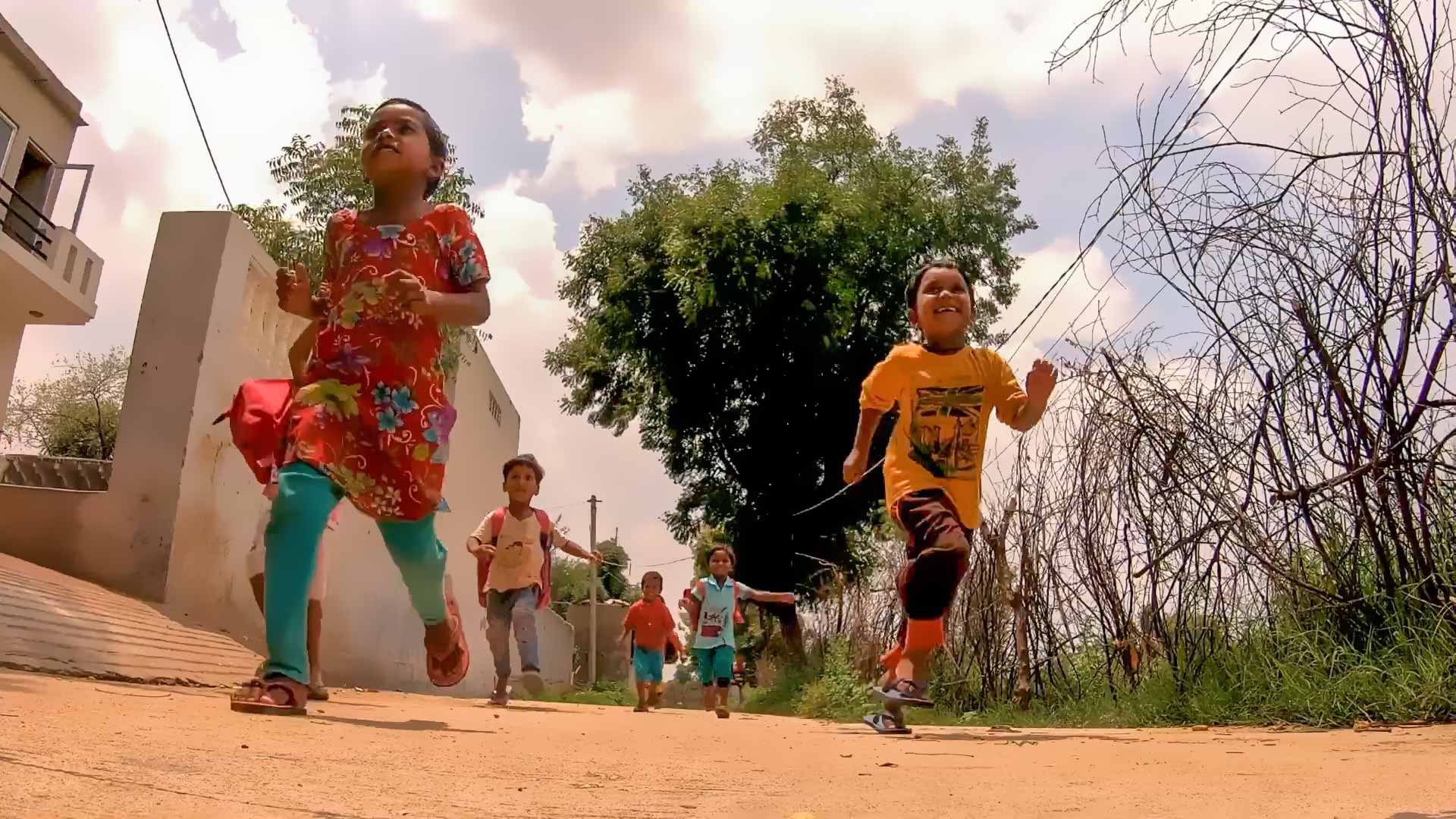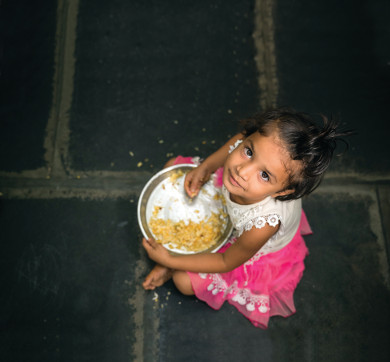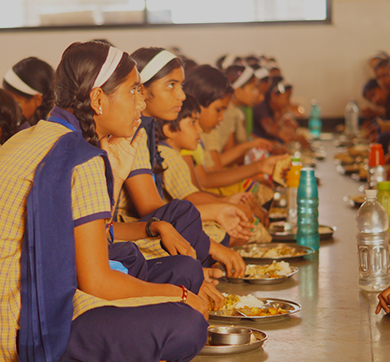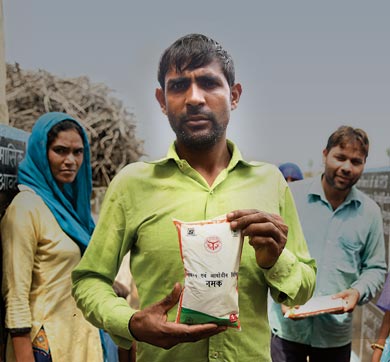November 2019 | 1274 words | 5-minute read
Somewhere in a village in Rajasthan, Bhanwarlal Yadav is resting easy, comforted by the knowledge that the community he is charged with caring for is in better shape than ever, and primed to do better still. Mr Yadav heads the Jhilai village council in Tonk district and the satisfaction he feels is fuelled in the main by the progress his village — and its childcare centres in particular — has made in turning the malnutrition tide.
“Our anganwadis (childcare centres) were in terrible shape just two years back,” says Mr Yadav. “We have nine in our village and every one of them was falling apart. The food served in them was barely palatable and the whole environment was unclean. Not surprisingly, Jhilai was doing poorly on nutrition. The government didn’t care, the village council didn’t care and we villagers didn’t care.”
Safer zone
Two summers down the line, Jhilai and its people are in a safer, more nutritious zone. The story of how it got there begins with the anganwadis of the village, the kickoff point for a transformation encouraged and supported by The India Nutrition Initiative (TINI) of the Tata Trusts. “We refurbished one of our anganwadis and made that the model for the rest,” adds Mr Yadav, who was recently honoured by the central government’s Ministry for Women and Child Development after Jhilai emerged as the best performing panchayat (village council) in India on nutrition awareness.
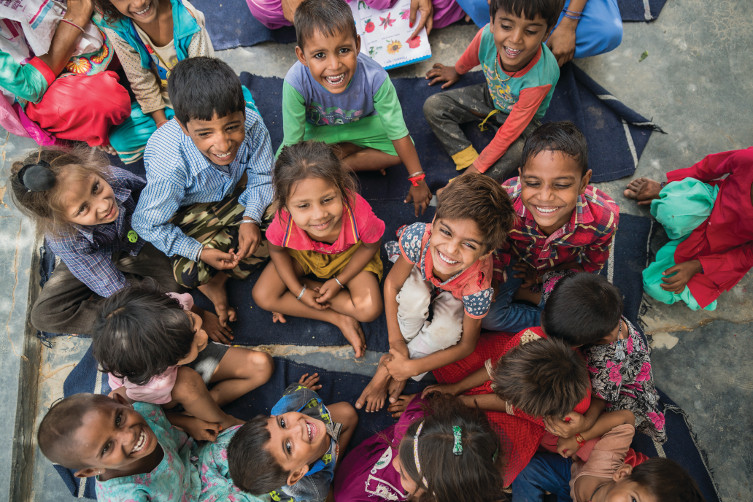
Anganwadis are the first stop and the last outpost in ensuring healthy village communities. There are some 1.3 million of them across the country and they are at the core of the nutrition challenge facing rural India. An all-woman battalion of workers helps run these centres, which are shepherded by the Indian government’s Integrated Child Development Services (ICDS) programme.
ICDS is huge in scale and potential (it drew on government allocations totalling Rs 410 billion in 2018-19). The scheme provides food, early education, primary healthcare and immunisation to children under six — and a variety of services to their mothers as well — in every nook and cranny of the country. Launched in 1975, ICDS has often been lauded as an exemplar for the developing world. But it has had an uneven ride, achieving much while falling short on many fronts.
Entry point
To aid the ICDS cause is the overarching intent of TINI’s ‘making it happen’ project. The entry point is the anganwadis and from there on to galvanising the community in tackling malnutrition and improving health outcomes. There are four components in this effort: upgrading anganwadis to make them more useful to mother and child; training and building capacity in the community workers at the centres; mobilising and raising awareness among households through events and fairs; and advocacy at the village, district and state levels with government officials and institutions.
The project is currently operational in five districts in Rajasthan and in three each in Maharashtra and Andhra Pradesh. Through it more than 550 anganwadis have got the refurbishment treatment, the skills and knowledge of community workers have been enhanced, villagers have been educated about their entitlements and how to secure them, panchayats have been pulled in as partners, and data analytics has been used to improve monitoring.
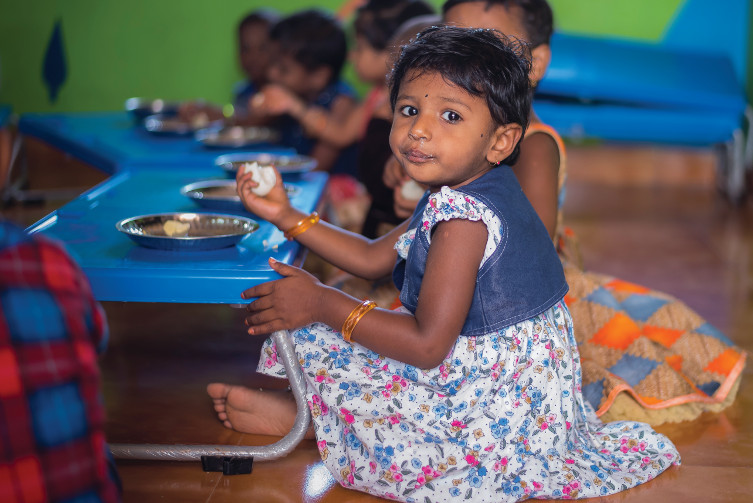
The idea is to ‘make it happen’ for ICDS and therein lies the rub. Dogged by delays and slow to gather pace, the scheme languished for long. Finally, following a nudge from the Supreme Court, it was relaunched in 2002. “ICDS is wonderfully designed and very well thought out,” says Ishaprasad Bhagwat, a programme manager with TINI. “The trouble is with implementation. In many states it is nobody’s baby. Children are not voters so politicians tend to ignore them.”
Women are vital
Children may not be but their mothers are, and there is no constituency more important to the well-being of the community than women. “Only the mother can ensure her child’s good health; the rest of us are outsiders,” says Dr Bhagwat. “We are reaching women through anganwadis and self-help groups. The objective is to get the right messages to them and to get them to behave differently.”
Chameli Gupta, a mother of two from Sainthal village in Rajasthan’s Dausa district, is part of the audience TINI is focused on. “It feels nice to go to the anganwadi now,” she says. “It wasn’t like this earlier; there has been a world of change here. Women are counselled and children are taken care of. There’s a proper toilet and piped water. Our kids get healthy food and a clean place to sit, to read, to play. What more would they want?”
The situation for women is changing alongside in places previously stuck in a rut on gender issues. “Education standards are up and our girls are benefitting,” says Mr Yadav. Ms Gupta concurs. “Our girls have become progressive,” she adds. “They go to school and college almost as matter of routine and many of them have formal jobs. Ghoonghats [face veils] are still around but they are disappearing fast.”
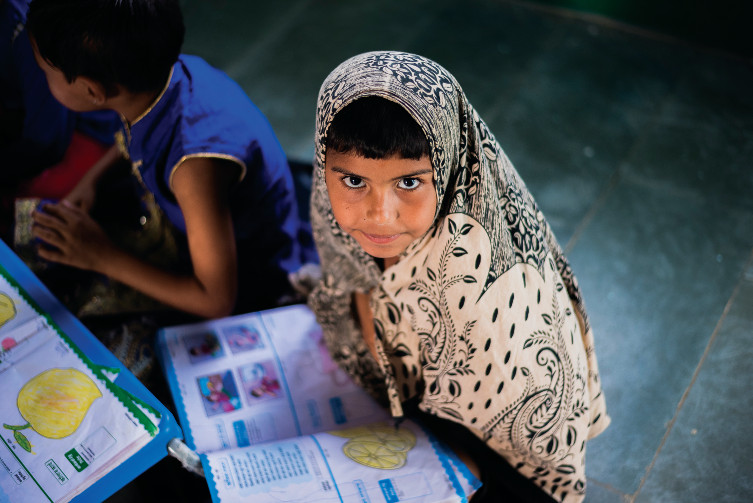
The training imparted to anganwadi workers is a key factor in the TINI endeavour and this has been a boon for women like Surekha Bhoye. An anganwadi worker for 11 years in Tambadmal in Maharashtra’s Palghar district, she is glad the drab old days are gone. “The training and capacity building have been tremendous enablers for us,” she says. “The villagers are receptive to what we say. We make them understand about food, vaccinations and the like. They tend to eat right these days — mostly.”
Eating right has another dimension, of course — it takes money in the pocket to put food on the table. Poverty remains a sturdy barrier on the path to improved nutrition and illiteracy adds to the load. Mamta Khangar, a 25-year-old from Jhilai village, has to cope with both. She has three children and is pregnant with a fourth. The anganwadi is a godsend for her. “I’m taken care of here during my pregnancy and my kids have a place to go to,” she says. “We have a bit more money now so it’s better. Otherwise we eat what we can afford to eat. After all, you need money to eat well, dress well and live well.”
Responsibilities galore
There is no dearth of requirements and fulfilling these is a complex task. The initiative itself is less so. “We have suffered a few falls but we get up and keep running,” says Smriti Sharma, a programme officer who oversees the Maharashtra portion of ‘make it happen’. “We are creating demand from the community through the system, we are doing more and more community-based events, and we are persistent with government officials. The positives from the ground make the work worth it. I just wish all our centres had electricity.”
Nilesh Yadav, also a programme officer with TINI, believes the opportunity to partner the government is a boon. It is an occasional — and occupational — bane too. “This is a system strengthening initiative, which means there are challenges,” he says. “We understand that we are there to support and to fill the gaps. We have given it our best shot.”
“The gratifying part is that we are working with the government to make its nutrition mechanisms more effective and sustainable,” says Dr Bhagwat. “Wonders can be accomplished if you really ‘make it happen’ — and it can be done.”
—Philip Chacko
Source: Tata Trusts' Horizons, September 2019 issue


